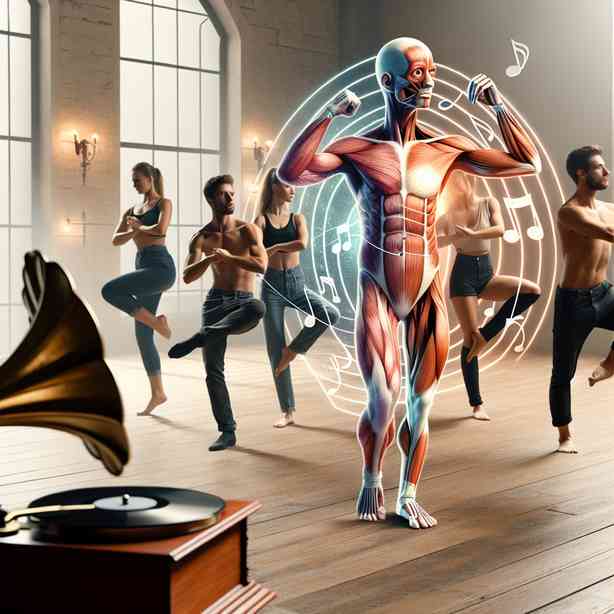
Muscle memory, a fascinating phenomenon, is often associated with physical activities such as playing a musical instrument or participating in sports. But have you ever considered how this concept translates to learning and mastering a song? The connection between music, muscle memory, and cognitive understanding creates a rich landscape for exploration, and today we delve into the intricate details of how a song can become deeply ingrained in our memory, enhancing our performance as musicians and deepening our appreciation as listeners.
When we talk about muscle memory in relation to music, we are primarily discussing the physical actions involved in playing an instrument. For example, a pianist’s fingers learn to navigate the keys with speed and precision, seemingly without conscious thought. Each repetition builds connections within the nervous system, making it easier to perform complex sequences of notes. This phenomenon is not limited to just the fingers; it can encompass the entire body as a musician learns to embody the rhythm and feel of the music.
The process often begins with a song that resonates with an individual. This might be due to emotional reasons, personal experiences associated with the song, or simply the joy of the melody. As a musician starts to practice, they may break the song down into manageable sections. This is where the journey truly begins. By repeating these sections over and over, the brain and body start to synchronize. The muscular actions involved in playing, whether it’s pressing keys or strumming strings, become second nature. Hence, the initial awkwardness fades as the body begins to respond instinctively to the music.
One crucial aspect to consider is the importance of consistency in practice. Regular practice sessions help solidify the neural pathways involved in muscle memory. When a musician plays a song daily, or at least several times a week, their fingers develop the necessary strength and dexterity. This consistency not only reinforces the physical act of playing but also solidifies the emotional connection to the music. The more you play, the more the music enters your psyche, allowing you to truly feel the essence of the song.
Moreover, the role of slow practice cannot be overstated. When learning a new piece, taking the time to play slowly and accurately can significantly enhance the development of muscle memory. At a slower tempo, musicians can focus on finger placement and technique, which lays down a strong foundation for when they eventually speed up. This slow practice results in deliberate, mindful movements that translate into effortless execution as speed increases.
In addition to these practical aspects, emotional engagement with the music is another layer that enhances muscle memory. When musicians connect with a song on a deeper level—be it through the lyrics, melody, or history of the piece—the process of learning becomes even more meaningful. This emotional connection drives motivation, making practitioners more eager to invest time in practice. It also turns the song into a living entity in their minds, one that they can repeatedly revisit and reinterpret, thus enriching their musical expression.
As we explore the impact of muscle memory on song mastery, we also have to consider the educational aspect. Music educators can play a significant role in guiding students through this process. By creating a supportive environment that encourages experimentation and expression, teachers can help students develop both their technical skills and their emotional connection to music. This holistic approach not only fosters technical proficiency but also nurtures creativity and personal interpretation—essential elements for musicianship.
Furthermore, the advent of technology has added a new dimension to music practice. From metronomes to apps that provide instant feedback on performance, these tools can enhance the traditional methods of building muscle memory. By tracking progress, musicians can identify their strengths and weaknesses, making targeted practice more efficient. Moreover, platforms for learning music online have opened doors for collaboration and exposure, further enriching the musical experience.
In essence, the idea of a song becoming muscle memory is not merely about the physical act of playing. It’s a journey through emotional resonance, cognitive connection, and physical mastery. As musicians dedicate themselves to their craft, they weave a rich tapestry of experiences that become part of their identity. Each note played is a brushstroke on the canvas of their artistic life, capturing both the struggle of practice and the joy of performance.
As we conclude our exploration, it is evident that the relationship between a song and muscle memory is profound and multifaceted. The process requires patience, practice, and passion. It is through these avenues that a piece of music transforms from a series of notes into a lively expression of one’s self. Whether one is a budding musician or an experienced performer, the journey of making a song into muscle memory is a rewarding endeavor, deepening one’s connection to music and elevating the overall experience of artistry.
So next time you find yourself immersed in a song, take a moment to appreciate the intricate dance between your mind, body, and the music itself. It’s more than just a melody; it’s a gateway to expressing emotions, sharing stories, and connecting with others in a uniquely human way. Embrace the journey, for within it lies the essence of what makes music truly magical.


